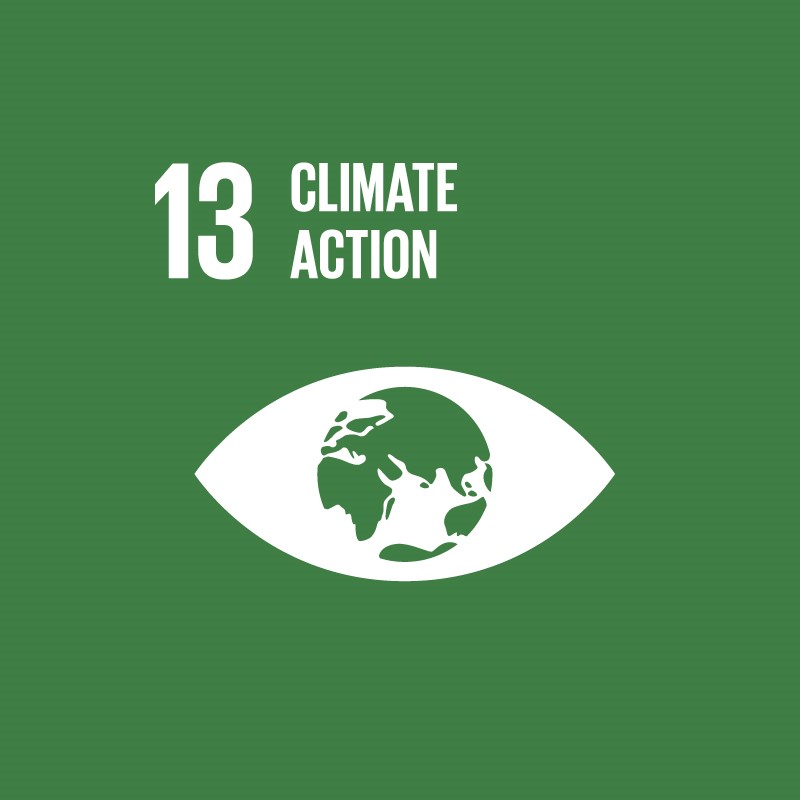Climate action plan
Currently, there is a 50 percent chance that the world will stay on a 1.5°C trajectory in the next five years. Many of our customers are highly vulnerable to climate change and will face new risks and adverse impacts. Because social, economic, and natural systems are interlinked, we must act in a holistic way, if our work is to have positive impact. Historically, emissions primarily come from today’s high-income countries, but as low- and low-middle-income countries grow, we must focus on low emission growth.

As part of our obligation under the Climate Commitment of the Dutch Financial Sector, FMO published its first Climate Action Plan in 2022. It aligns with our updated 2030 strategy and provides a holistic framework for action that contributes towards SDG 13 (Climate Action), SDG 8 (Decent Work and Economic Growth), SDG 10 (Reduced Inequalities), and a just and inclusive transition. The first version of the plan forms a foundation for us to build on in the coming years. More detailed information can be found on our website.
Focus on three areas
Our climate action focuses on three areas: 1) aligning our portfolio and investments with the Paris Agreement goals; 2) increasing climate investments and supporting our customers toward increased Paris alignment and increased resilience; and 3) active management of our climate action.
At a portfolio level, we are committed to reaching a net zero portfolio by 2050. This means we will align new investments with the country level mitigation and resilience goals of the Paris Agreement. For our investments, we will take an ambitious and well-studied approach that balances social and environmental considerations, as well as the need for a just and inclusive transition, and strive to align both new transactions and our portfolio with a 1.5°C pathway.
We are committed to phasing out fossil fuels in our direct investments and implementing additional restrictions for our indirect investments. We have set an absolute emission reduction target for our power generation portfolio of 50 percent by 2030. For 2022, we report an absolute emissions figure for the power generation portfolio of 541 ktCO2e based on 2021 emissions data and our 2022 outstanding exposure. This represents a seven percent reduction in absolute emissions compared to the 580 ktCO2e 2021 baseline. As the 2022 figure uses 2021 emissions data, this is due to an overall decrease of our outstanding exposure in operational fossil fuel plants. The final 2022 figure will be made available in the 2023 FMO Annual Report. Further information on the underlying methodology is provided in the chapter 'How we report'.
Furthermore, we aim to build a portfolio of at least €10 billion dedicated to SDG 13. We will simultaneously target climate mitigation, adaptation and resilience (including nature-based solutions), biodiversity, and other footprint reduction measures. At the same time, we will support our customers with their climate objectives, invest in market creation and mobilization for climate action, and bring additional capital for greater impact. We will seek the systematic integration of climate change in our strategy and our operations.
Our climate commitments are framed in the context of a just and inclusive transition, representing both the opportunity and necessity of pursuing our SDGs 8, 10, and 13 goals together. We recognize that environmental and social objectives are inextricably linked and will apply this framework to our climate goals. Our commitments are also underpinned by FMO’s Sustainability Policy and our Environmental, Social, and Governance (ESG) risk management framework. We see it as our fundamental role to be an ESG change agent.
What this means in practice for FMO’s portfolio
To align our portfolio and investments to the Paris Agreement with respect to climate mitigation, we recognize that our methodologies must be applied differently per country and sector, and that emission reduction pathways differ depending on country income. Additionally, we also consider the differentiated responsibilities and respective capabilities that each country has.
Climate action in each of our sectors is quite distinct. For energy, we focus on renewable energy deployment and supporting the energy transition in our markets. For local financial institutions, we aim to have a transformative impact on customers through a strategic approach (including the development of product propositions, capabilities, and related financing), with the goal of having the same effect on end beneficiaries. We see an opportunity to transform the agriculture sector in our markets through the use of sustainable, resource efficient and resilient practices and business models throughout agricultural supply chains. We will invest in forestry and help build this market.
Through our ‘Pioneer – Develop – Scale’ strategy, our market creation efforts will contribute to our impact portfolio objectives. In addition, we will scale our activities through our mobilization efforts.
Finally, we plan to actively manage our climate actions. This means we will monitor our work and adjust our actions based on data and information, including from a climate risk perspective, to ensure we are reaching our goals.
What this means in practice for FMO’s own operations
Based on measures already taken, FMO has a low level of operational emissions in our headquarters in the Netherlands. FMO has several programs to reduce waste levels and increase circularity in our offices. Our main Scope 3 emissions are related to travel by air required to conduct business and strengthen our value-add to our customers. Travel remains key to our ability to invest responsibly in distant markets and we will continue to offset our travel emissions by purchasing responsible carbon offsets.